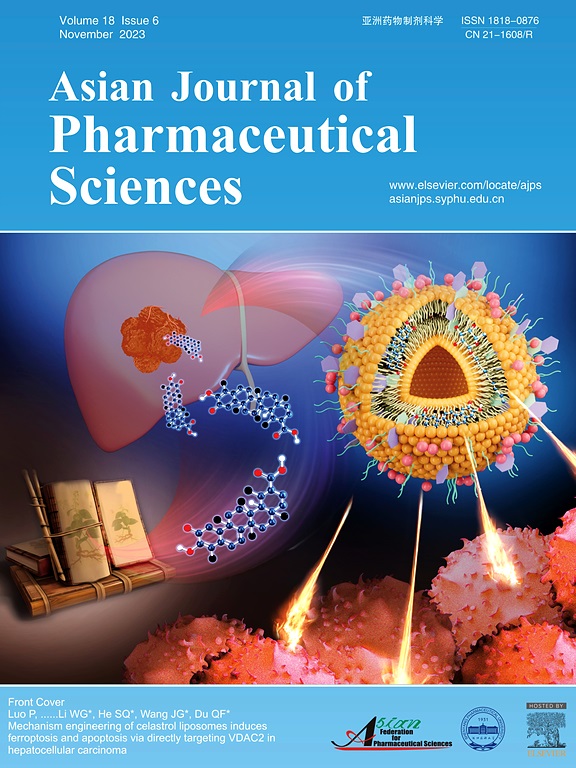Deep-insights: Nanoengineered gel-based localized drug delivery for arthritis management
IF 10.7
1区 医学
Q1 PHARMACOLOGY & PHARMACY
引用次数: 0
Abstract
Arthritis is an inflammatory joint disorder that progressively impairs function and diminishes quality of life. Conventional therapies often prove ineffective, as oral administration lacks specificity, resulting in off-target side effects like hepatotoxicity and GIT-related issues. Intravenous administration causes systemic side effects. The characteristic joint-localized symptoms such as pain, stiffness, and inflammation make the localized drug delivery suitable for managing arthritis. Topical/transdermal/intra-articular routes have become viable options for drug delivery in treating arthritis. However, challenges with those localized drug delivery routes include skin barrier and cartilage impermeability. Additionally, conventional intra-articular drug delivery also leads to rapid clearance of drugs from the synovial joint tissue. To circumvent these limitations, researchers have developed nanocarriers that enhance drug permeability through skin and cartilage, influencing localized action. Gel-based nanoengineered therapy employs a gel matrix to incorporate the drug-encapsulated nanocarriers. This approach combines the benefits of gels and nanocarriers to enhance therapeutic effects and improve patient compliance. This review emphasizes deep insights into drug delivery using diverse gel-based novel nanocarriers, exploring their various applications embedded in hyaluronic acid (biopolymer)–based gels, carbopol-based gels, and others. Furthermore, this review discusses the influence of nanocarrier pharmacokinetics on the localization and therapeutic manipulation of macrophages mediated by nanocarriers. The ELVIS (extravasation through leaky vasculature and inflammatory cell-mediated sequestration) effect associated with arthritis is advantageous in drug delivery. Simply put, the ELVIS effect refers to the extravasation of nanocarriers through leaky vasculatures, which finally results in the accumulation of nanocarriers in the joint cavity.

深入见解:纳米工程凝胶为基础的局部药物递送关节炎管理
关节炎是一种炎症性关节疾病,会逐渐损害功能,降低生活质量。常规疗法往往无效,因为口服给药缺乏特异性,导致脱靶副作用,如肝毒性和git相关问题。静脉给药会引起全身副作用。特有的关节局部症状,如疼痛、僵硬和炎症,使得局部给药适合于治疗关节炎。局部/透皮/关节内途径已成为治疗关节炎的药物递送的可行选择。然而,这些局部药物输送途径的挑战包括皮肤屏障和软骨不渗透性。此外,传统的关节内给药也会导致滑膜关节组织中药物的快速清除。为了规避这些限制,研究人员开发了纳米载体,增强药物通过皮肤和软骨的渗透性,影响局部作用。凝胶基纳米工程疗法采用凝胶基质结合药物包封的纳米载体。这种方法结合了凝胶和纳米载体的优点,增强了治疗效果,提高了患者的依从性。这篇综述强调了使用各种凝胶基新型纳米载体对药物传递的深入了解,探索了它们在透明质酸(生物聚合物)凝胶、碳水化合物凝胶等中的各种应用。此外,本文还讨论了纳米载体药代动力学对纳米载体介导的巨噬细胞定位和治疗操作的影响。与关节炎相关的ELVIS(渗漏血管外渗和炎症细胞介导的隔离)效应在给药中是有利的。简单地说,猫王效应是指纳米载体通过渗漏的血管外渗,最终导致纳米载体在关节腔内积聚。
本文章由计算机程序翻译,如有差异,请以英文原文为准。
求助全文
约1分钟内获得全文
求助全文
来源期刊

Asian Journal of Pharmaceutical Sciences
Pharmacology, Toxicology and Pharmaceutics-Pharmaceutical Science
CiteScore
18.30
自引率
2.90%
发文量
11
审稿时长
14 days
期刊介绍:
The Asian Journal of Pharmaceutical Sciences (AJPS) serves as the official journal of the Asian Federation for Pharmaceutical Sciences (AFPS). Recognized by the Science Citation Index Expanded (SCIE), AJPS offers a platform for the reporting of advancements, production methodologies, technologies, initiatives, and the practical application of scientific knowledge in the field of pharmaceutics. The journal covers a wide range of topics including but not limited to controlled drug release systems, drug targeting, physical pharmacy, pharmacodynamics, pharmacokinetics, pharmacogenomics, biopharmaceutics, drug and prodrug design, pharmaceutical analysis, drug stability, quality control, pharmaceutical engineering, and material sciences.
 求助内容:
求助内容: 应助结果提醒方式:
应助结果提醒方式:


